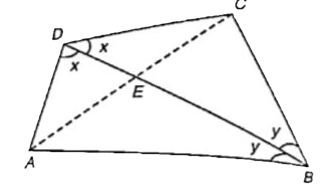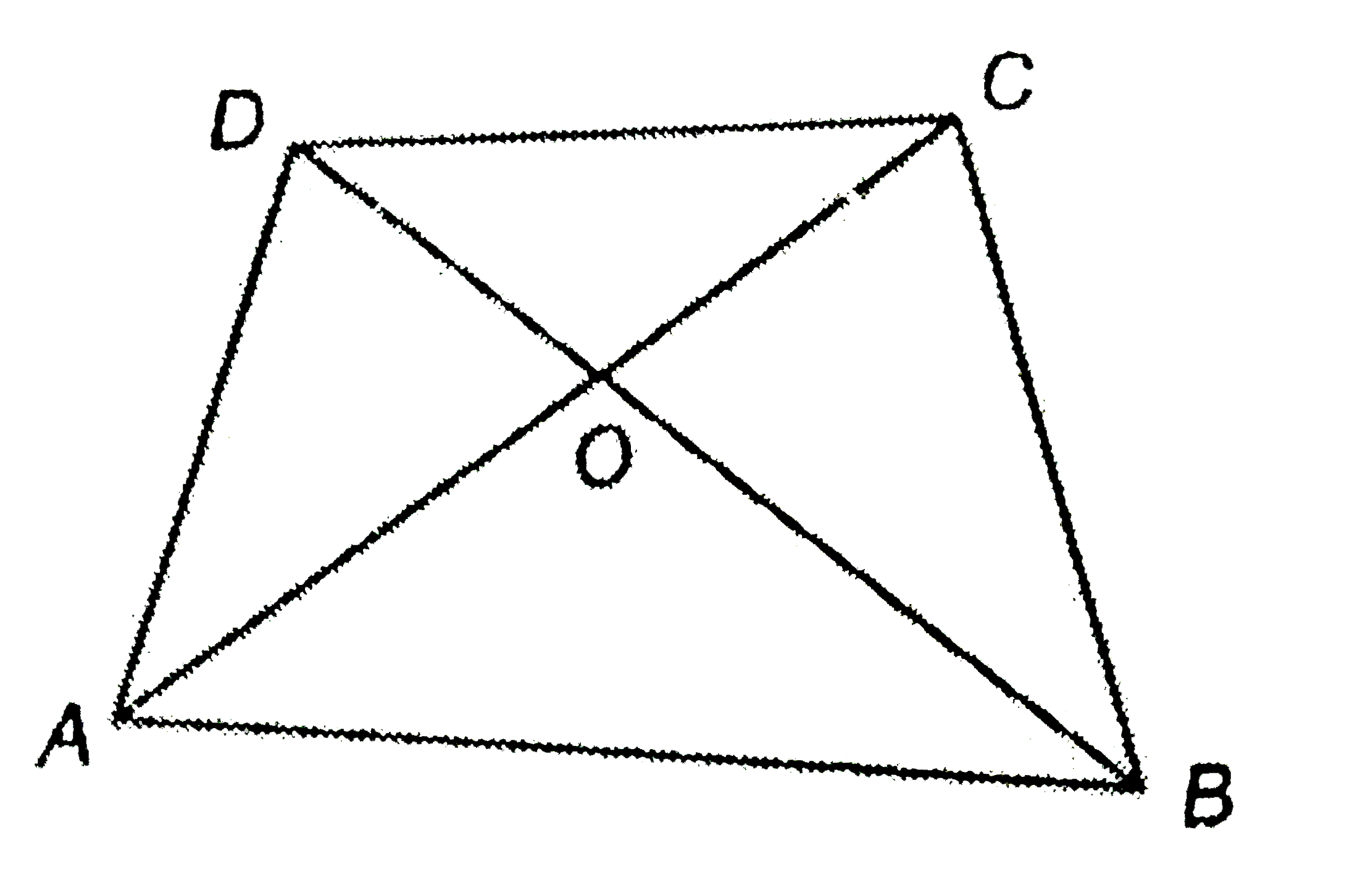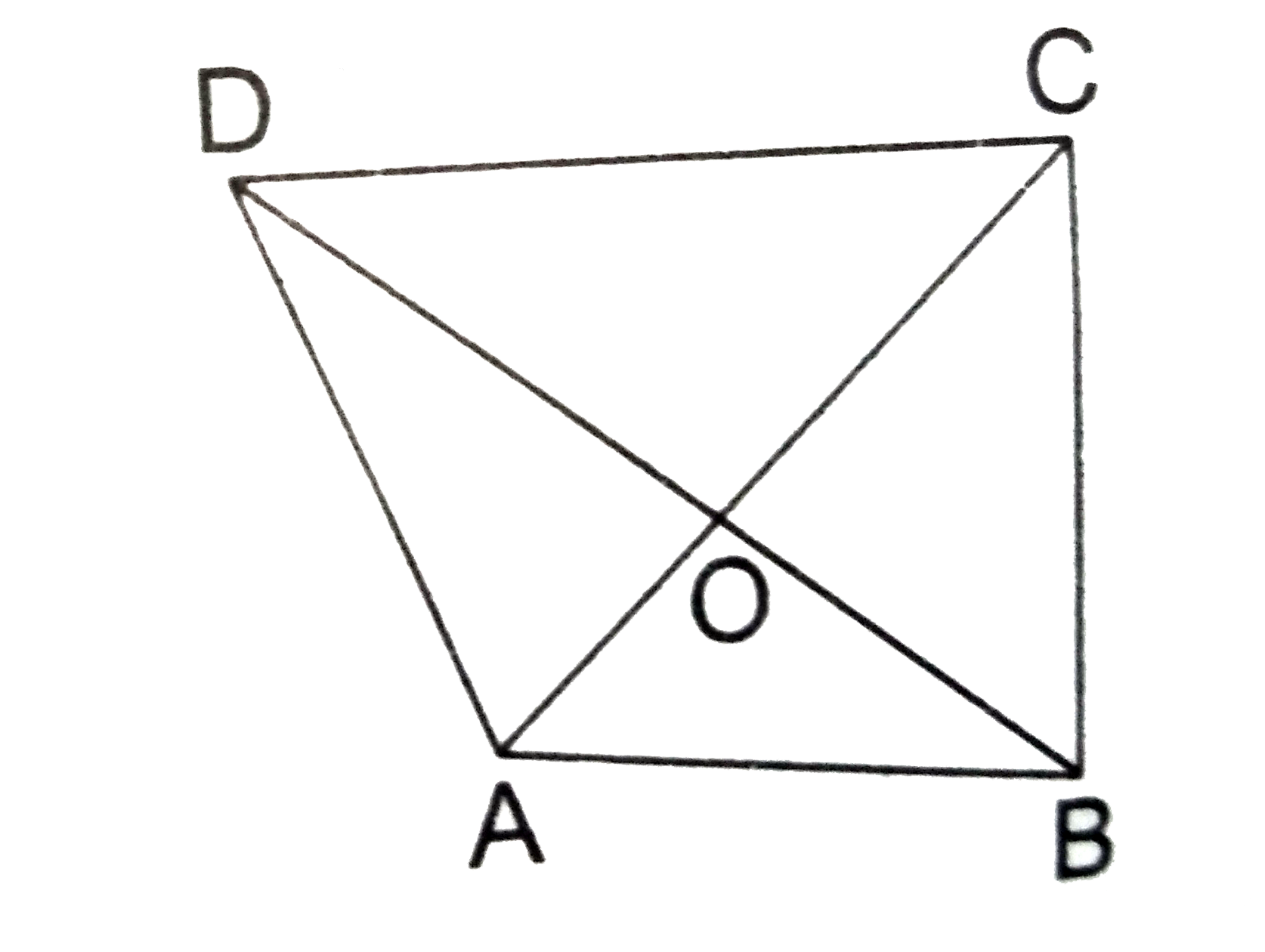The diagonals of quadrilateral ABCD, AC and BD intersects at O. Prove that if BO = OD then the triangles ABC and ADC are equal in area.
To prove that the areas of triangles ABC and ADC are equal given that BO = OD, we can follow these steps:
1. Given Information: We have a quadrilateral ABCD where the diagonals AC and BD intersect at point O. We are given that BO = OD.
2. Construction: Draw perpendiculars from points B and D to line AC. Let the foot of the perpendicular from B be point M and from D be point N.
3. Identify Angles: Since BM and DN are both perpendicular to AC, we have:
- ∠BMO = 90° (angle at M)
- ∠DNO = 90° (angle at N)
4. Vertically Opposite Angles: The angles ∠MOB and ∠NOD are vertically opposite angles, hence:
- ∠MOB = ∠NOD
5. Use Given Information: We know that BO = OD (given).
6. Triangles Comparison: Now we have two triangles, ΔBOM and ΔDON. We can compare these triangles:
- BO = OD (given)
- ∠BMO = ∠DNO = 90° (both are right angles)
- ∠MOB = ∠NOD (vertically opposite angles)
7. Congruence of Triangles: By the Angle-Angle-Side (AAS) criterion, we can conclude that:
- ΔBOM ≅ ΔDON
8. Corresponding Parts of Congruent Triangles: Since the triangles are congruent, their corresponding parts are equal. Thus:
- BM = DN (heights from B and D to line AC)
9. Area of Triangles: The area of triangle ABC can be expressed as:
Area of △ABC=12×AC×BM
And the area of triangle ADC can be expressed as:
Area of △ADC=12×AC×DN
10. Equating Areas: Since BM = DN (from the congruence of triangles):
Area of △ABC=Area of △ADC
11. Conclusion: Therefore, we have proved that the area of triangle ABC is equal to the area of triangle ADC.
- ∠BMO = 90° (angle at M)
- ∠DNO = 90° (angle at N)
- ∠MOB = ∠NOD
- BO = OD (given)
- ∠BMO = ∠DNO = 90° (both are right angles)
- ∠MOB = ∠NOD (vertically opposite angles)
- ΔBOM ≅ ΔDON
- BM = DN (heights from B and D to line AC)
Area of △ABC=12×AC×BM
And the area of triangle ADC can be expressed as:
Area of △ADC=12×AC×DN
Area of △ABC=Area of △ADC
Topper's Solved these Questions
- BOOK - MTG IIT JEE FOUNDATIONCHAPTER - AREAS OF PARALLELOGRAMS AND TRIANGLESEXERCISE - SOLVED EXAMPLES14videos
AREAS OF PARALLELOGRAMS AND TRIANGLES
- BOOK - MTG IIT JEE FOUNDATIONCHAPTER - AREAS OF PARALLELOGRAMS AND TRIANGLESEXERCISE - NCERT SECTION ( EXERCISE 9.1)1videos
AREAS OF PARALLELOGRAMS AND TRIANGLES
- BOOK - MTG IIT JEE FOUNDATIONCHAPTER - CIRCLES EXERCISE - OLYMPIAD/HOTS CORNER6videos
CIRCLES
Similar Questions
Knowledge Check
- Question 1 - Select One
The diagonal BD of a quadrilateral ABCD bisects ∠Band∠D, then :
 AABCD=ADBCBADAB=BCCDCABBC=ADCDDAB=AD×BC
AABCD=ADBCBADAB=BCCDCABBC=ADCDDAB=AD×BC
In quadrilateral ABCD, BA = BC and DA = DC. Prove that BD bisects ∠ ABC as well as ∠ ADC.
View SolutionIf ABCD is a quadrilateral whose diagonals AC and BD intersect at O, then
 View Solution
View SolutionIn the figure, diagonals AC and BD of quadrilateral ABCD intersect at O such that OB = OD. If AB = CD, then show that

ar(ΔDOC) = ar(ΔAOB)View Solutiondiagonal of a cocyclic parallelogram ABCD is AC and BD intersection at point R. then
View SolutionIf the diagonals AC, BD of a quadrilateral ABCD, intersect at O, and separate the quadrilateral into four triangles of equal area, show that quadrilateral ABCD is a parallelogram.
View SolutionIn Fig 9.25, diagonals AC and BD of quadrilateral ABCD intersect at O such that OB = OD.If AB=CD , then show that
View SolutionIn the figure, diagonals AC and BD of quadrilateral ABCD intersect at 0 such that OB = OD. If AB = CD, then show that

DA I I CB or ABCD is a parallelogram.View Solution


